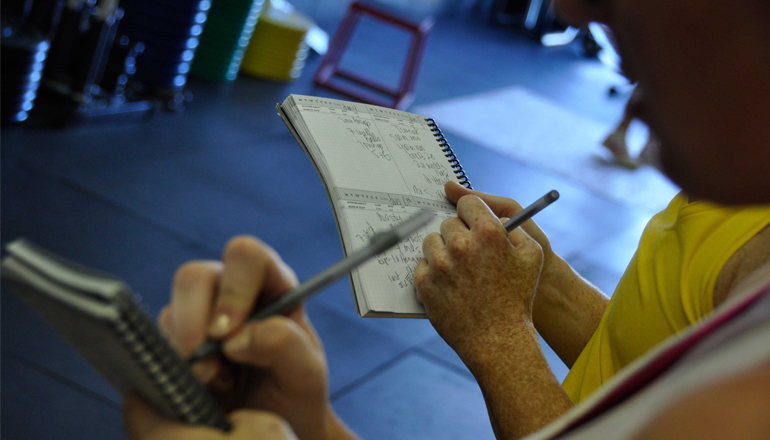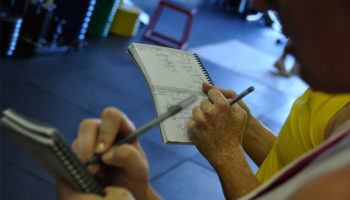 Reading Time: 3 minutes
Reading Time: 3 minutesYou have a half-dozen social media tools for reaching your members: Facebook, Twitter, Instagram, your email list, the “power tools” of reaching far and wide.
It would be tempting to think that leveraging these tools is your best shot for throwing a successful event (but it’s not).
In a world dominated by social media, your best tool for getting your members to participate in special events is still a pen and piece of paper.
Over years of experimentation and trial and error with a community of 300 – 350 people at CrossFit Los Angeles, we found that nothing works better than the low-tech, age old, ink-on-paper, sign-up sheet.
Read on for a bit of background and a seven-step process for leveraging social proof via the classic sign-up sheet.
Social Proof
Social proof is the phenomenon by which we see other (well-respected) people engaging in an activity, and therefore decide to engage as well. Their participation creates and stimulates our desire to participate, driven by:
- Our natural desire to belong
- The ever-present fear of missing out
The twin components of social proof are truly powerful, as are their ability to sway drive all kinds of behavior (including event registration). The more that we see others invested in participating, the more we want to participate too.
Creating a visual list of those already committed to the event is the social proof you need to show that people believe in you, your idea, and your event.
There’s nothing better than a centrally-located, filled-to-bursting sheet with dozens of names on it to spur further participation.
Step-by-Step with the Sign-up Sheet
Just as there is nothing better than a full sign-up sheet, there is nothing worse than having a blank sign-up sheet hanging on the wall. Is anyone going to that event? Should I be the first one to commit? The blank sheet and its attendant lack of social proof serves in reverse, a signal that no one is committing, and you shouldn’t either.
Therefore, the most important thing you can do (prior to hanging the sign-up sheet): get your raving fans signed up in advance. Before you ever hang the sheet, go to them personally, tell them about the event, get them excited, ask them to commit to attending, and finally, add their names to your sign-up sheet.
Then (and only then) post the list.
Then, when you see your members in class, refer to the sheet (and its location), talk about the event, and address each person individually about signing up. A pre-class walkabout or an end-of-class cooldown is a great time to do this.
Talk to each member about their needs, their goals, and how the event could support their training and life. If it goes well, hand them the list, give them a pen, and watch while they put their name down. The phrase, “Why don’t you sign up now?” will pay huge dividends in spurring action.
As your list grows, this process becomes easier. Suddenly everyone in your community wants to attend (because everyone else is committed). You’ve leveraged the power of social proof.
Here’s what to do:
- Plan the event – pick dates, times, sketch out the rough.
- Contact your raving fans, one at a time if necessary. Get them to commit to signing up.
- Create a sign-up sheet. Put the names of your raving fans at the top.
- Post the list where everyone will see it.
- Refer to the list when coaching.
- Bring clients over to the list (or bring the list to them) individually. Talk about how they would benefit from signing up. Hand them a pen, and watch them put their name down. (We’ve done this before, one person at a time over the course of an hour-long class, and had just about everyone sign up).
- Then, as the list grows, watch as your event picks up steam.






